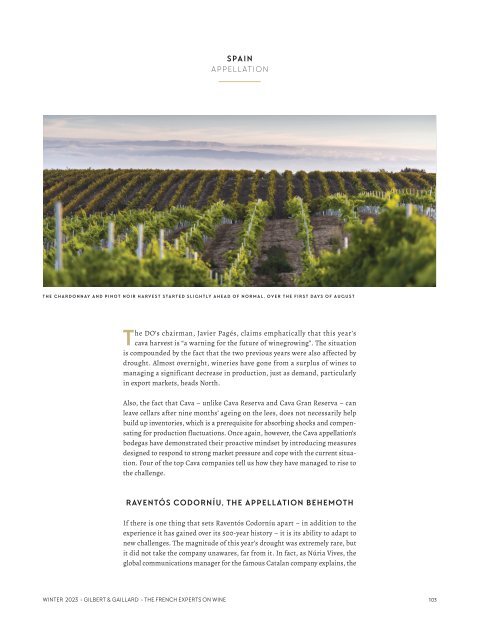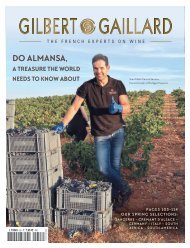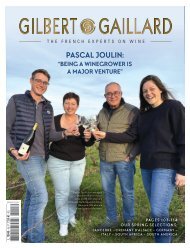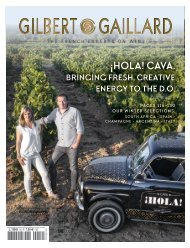Create successful ePaper yourself
Turn your PDF publications into a flip-book with our unique Google optimized e-Paper software.
SPAIN<br />
APPELLATION<br />
THE CHARDONNAY AND PINOT NOIR HARVEST STARTED SLIGHTLY AHEAD OF NORMAL, OVER THE FIRST DAYS OF AUGUST<br />
The DO’s chairman, Javier Pagés, claims emphatically that this year’s<br />
cava harvest is “a warning for the future of winegrowing”. The situation<br />
is compounded by the fact that the two previous years were also affected by<br />
drought. Almost overnight, wineries have gone from a surplus of wines to<br />
managing a significant decrease in production, just as demand, particularly<br />
in export markets, heads North.<br />
Also, the fact that Cava – unlike Cava Reserva and Cava Gran Reserva – can<br />
leave cellars after nine months’ ageing on the lees, does not necessarily help<br />
build up inventories, which is a prerequisite for absorbing shocks and compensating<br />
for production fluctuations. Once again, however, the Cava appellation’s<br />
bodegas have demonstrated their proactive mindset by introducing measures<br />
designed to respond to strong market pressure and cope with the current situation.<br />
Four of the top Cava companies tell us how they have managed to rise to<br />
the challenge.<br />
RAVENTÓS CODORNÍU, THE APPELLATION BEHEMOTH<br />
If there is one thing that sets Raventós Codorníu apart – in addition to the<br />
experience it has gained over its 500-year history – it is its ability to adapt to<br />
new challenges. The magnitude of this year’s drought was extremely rare, but<br />
it did not take the company unawares, far from it. In fact, as Núria Vives, the<br />
global communications manager for the famous Catalan company explains, the<br />
WINTER 2023 • GILBERT & GAILLARD - THE FRENCH EXPERTS ON WINE<br />
103
















